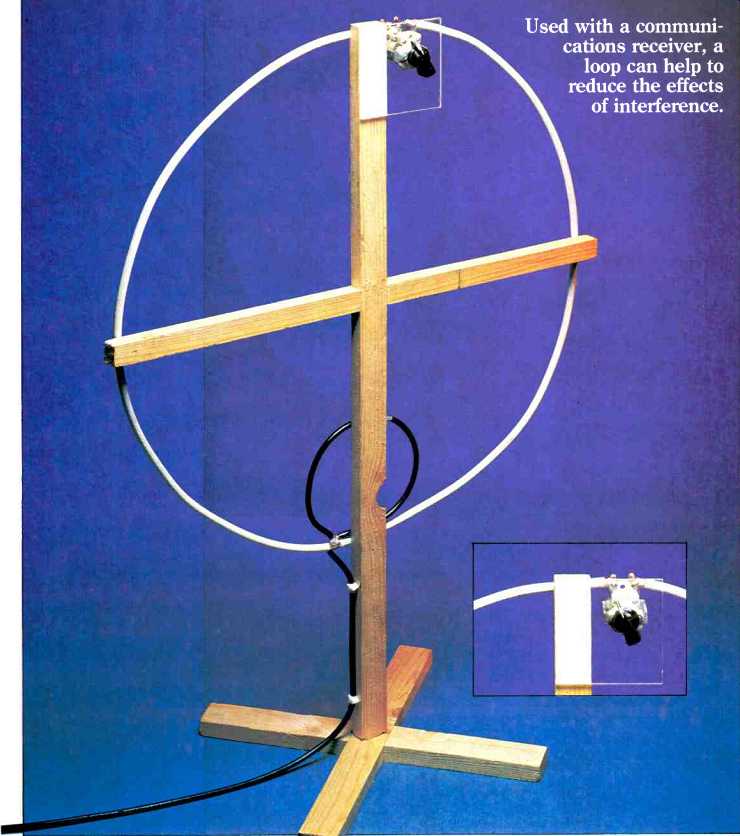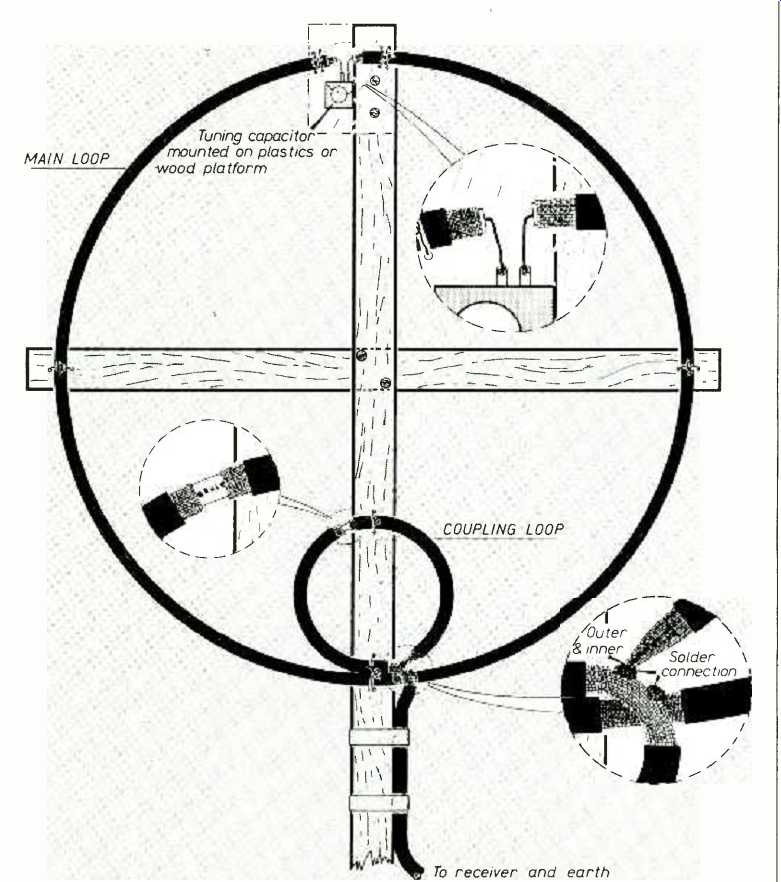by S. Mukherjee

Fig.1 Finished aerial, with (inset) detail of tuning capacitor. Used with a
communications receiver, a loop can help to reduce the effects of interference.
Loop antennas are useful indoors, where they often provide rather more protection than a rod aerial against noise from electrical appliances. If an outdoor whip or long wire antenna cannot be used for short wave reception, it may be worth constructing a compact indoor loop.
The loop antenna illustrated here has a main loop which is tuned to the band being received, and a small coupling loop which extracts the signal at a low impedance level for connection to the receiver via coaxial cable.
Both loops are screened against interference by making them from coaxial cable with a short gap in the outer conductor at the top of the loop. The screening (coax, outer) is earthed symmetrically at the bottom of each loop, using the outer of the downlead as an earth connection.
You can make a frame for the loop from wooden laths or bamboo poles using simple tools.
Ideally, the frame should allow for easy rotation of the antenna (to maximize pickup and avoid unwanted nulls in the figure-eight shaped directional pattern). It should also be easy to move about to find the best spot in the room which, in general, is likely to be a short distance behind a window, but which varies from building to building.
Best results will be obtained using a well-screened communications receiver fitted with a low impedance (50-80 ohm) antenna socket: with poorly screened receivers, stray pickup will bypass the loop and increase vulnerability to interference.
Tune the loop to a weak but steady transmission, using a large, insulated knob on the tuning capacitor to reduce hand effects (better with an insulated extension spindle as well). Mount the capacitor on a panel or platform of insulating material fixed near the top of the main loop.
In some receivers the antenna terminals sit at a d.c. potential above ‘earth'; with these, insert blocking capacitors (say 10 nF) between antenna and receiver.
The table gives dimensions for circular loops but square loops of equal area may also be used.


Fig. 2 Construction of aerial
==========
(adapted from: Wireless World , Apr. 1985)